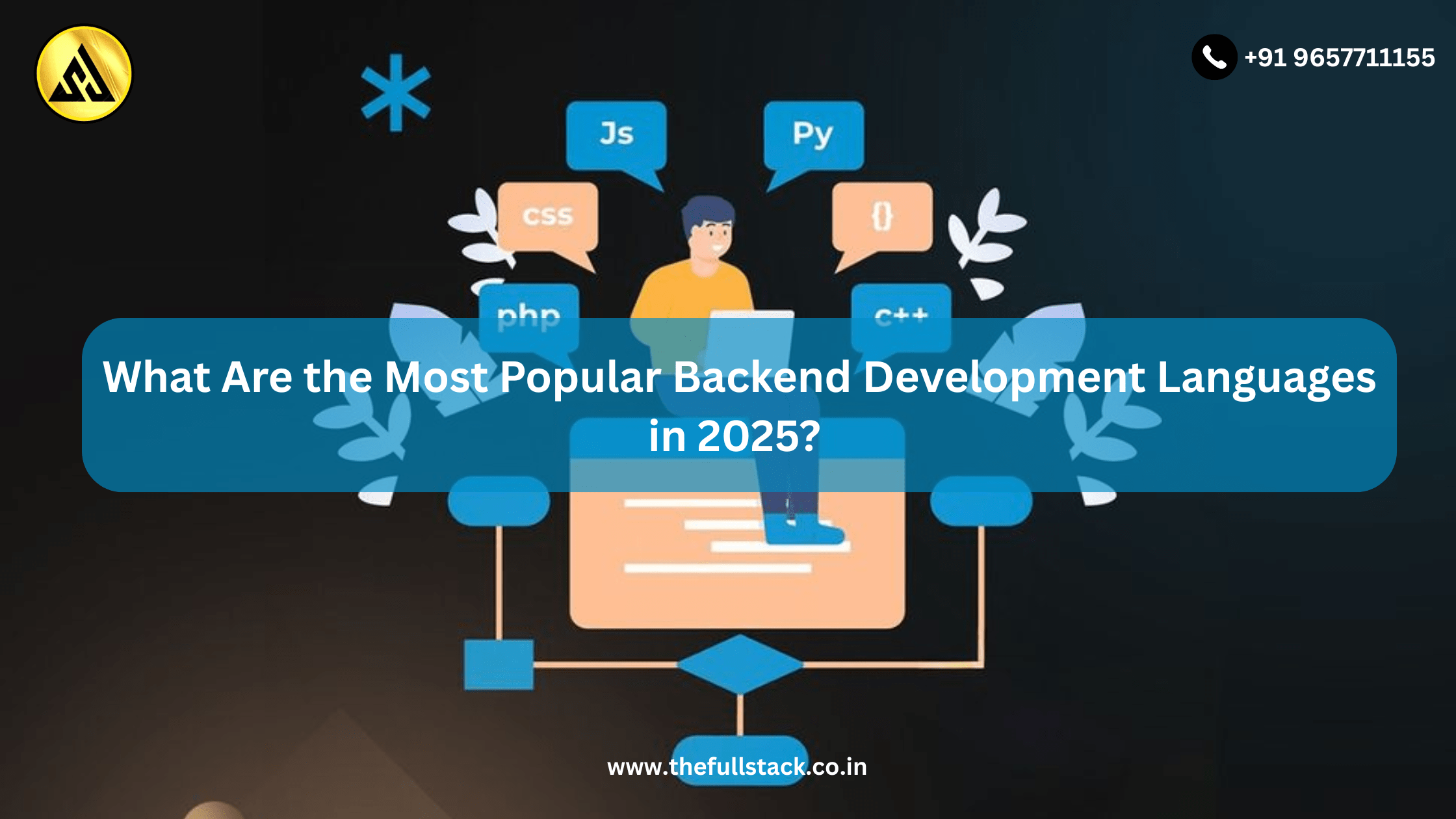
What Are the Most Popular Backend Development Languages in 2025?
Backend programming languages are essential to the proper operation of applications in the dynamic realm of online and software development. As of 2025, a few up-and-coming languages are gaining traction, while a number major backend languages still control the tech sector. Here is your guide to the most popular backend development languages in 2025, whether your goal is to work as a backend developer or you just want to improve your technical abilities.
🌐 What Is Backend Development?
The server-side aspect of web development is known as backend development. It consists of everything that consumers cannot see but that drives the application’s front end, such as servers, databases, and application logic. When necessary, backend engineers make sure data is appropriately processed, stored, and sent back to the frontend.
🔝 Most Popular Backend Languages in 2025
1. JavaScript (Node.js)
Even though JavaScript is widely known for frontend development, Node.js continues to make it a popular backend solution.
- Why it’s popular in 2025: Large community, full-stack capability, real-time applications, and microservices support.
- Use cases: APIs, chat apps, and dynamic websites.
2. Python
Python remains a top choice due to its simplicity and wide use in AI and data processing.
- Why it’s popular in 2025: Clean syntax, Django and Flask frameworks, excellent for data-intensive apps.
- Use cases: Web apps, data dashboards, and machine learning platforms.
3. Java
A classic that still thrives in enterprise-level applications.
- Why it’s popular in 2025: High performance, scalability, Spring Boot framework, strong community.
- Use cases: Banking systems, enterprise software, Android backends.
4. Go (Golang)
Go is becoming a favorite for performance-critical applications and microservices.
- Why it’s popular in 2025: Fast execution, concurrency support, simple syntax.
- Use cases: Cloud-native apps, scalable APIs, real-time systems.
5. Rust
Rust is gaining traction in backend development for its performance and safety.
- Why it’s popular in 2025: Memory safety, performance comparable to C/C++, growing ecosystem.
- Use cases: High-performance servers, blockchain applications, game backends.
6. Kotlin
Originally known for Android, Kotlin is now widely used in backend via frameworks like Ktor and Spring.
- Why it’s popular in 2025: Interoperability with Java, concise code, official support by Google.
- Use cases: Android app backends, REST APIs, modern server-side apps.
7. PHP
Despite being considered old-school, PHP still powers major platforms like WordPress.
- Why it’s popular in 2025: Easy to learn, massive ecosystem, modern updates (e.g., PHP 8.2).
- Use cases: CMS platforms, eCommerce sites, blogs.
🌟 Emerging Backend Languages to Watch
1. Elixir
Built on Erlang, Elixir is known for scalability and fault tolerance.
- Use cases: Messaging systems, real-time apps (e.g., chat), telecommunications.
2. Crystal
Combines Ruby-like syntax with C-like performance.
- Use cases: Lightweight APIs, high-performance apps with cleaner code.
🎯 How to Choose the Right Backend Language in 2025?
Here are a few tips:
- Project Requirements: Is it an enterprise app, a startup MVP, or a microservice?
- Team Skills: Go with what your team is comfortable with.
- Community and Support: Choose languages with strong documentation and developer communities.
- Performance Needs: For high-performance tasks, prefer compiled languages like Go or Rust.
📌 Conclusion
Digital innovation is based on backend development, and the language you use can determine how successful and scalable your project is. In 2025, knowing backend languages will be essential for everyone creating their tech stack, be it a student, professional developer, or business owner.
You also like this:
What is Backend Development? A Complete Guide for Beginners [2025]


Leave a Reply